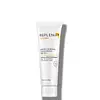What's inside
What's inside
 Key Ingredients
Key Ingredients

 Benefits
Benefits

 Concerns
Concerns

 Ingredients Side-by-side
Ingredients Side-by-side

Water
Skin ConditioningCyclopentasiloxane
EmollientZinc Oxide
Cosmetic ColorantPropanediol
SolventTitanium Dioxide
Cosmetic ColorantButylene Glycol Dicaprylate/Dicaprate
EmollientLauryl Polyglyceryl-3 Polydimethylsiloxyethyl Dimethicone
Skin ConditioningMethyl Methacrylate Crosspolymer
Butyloctyl Salicylate
Skin ConditioningCaprylyl Methicone
Skin ConditioningCitrus Aurantium Dulcis Oil
MaskingCitrus Nobilis Peel Oil
MaskingLitsea Cubeba Fruit Oil
Masking1,2-Hexanediol
Skin ConditioningDisteardimonium Hectorite
StabilisingMagnesium Sulfate
Stearic Acid
CleansingAluminum Hydroxide
EmollientPolyglyceryl-3 Polydimethylsiloxyethyl Dimethicone
Skin ConditioningTriethoxycaprylylsilane
Sorbitan Caprylate
EmulsifyingGlyceryl Caprylate
EmollientEthylhexylglycerin
Skin ConditioningTocopherol
AntioxidantWater, Cyclopentasiloxane, Zinc Oxide, Propanediol, Titanium Dioxide, Butylene Glycol Dicaprylate/Dicaprate, Lauryl Polyglyceryl-3 Polydimethylsiloxyethyl Dimethicone, Methyl Methacrylate Crosspolymer, Butyloctyl Salicylate, Caprylyl Methicone, Citrus Aurantium Dulcis Oil, Citrus Nobilis Peel Oil, Litsea Cubeba Fruit Oil, 1,2-Hexanediol, Disteardimonium Hectorite, Magnesium Sulfate, Stearic Acid, Aluminum Hydroxide, Polyglyceryl-3 Polydimethylsiloxyethyl Dimethicone, Triethoxycaprylylsilane, Sorbitan Caprylate, Glyceryl Caprylate, Ethylhexylglycerin, Tocopherol
Zinc Oxide 13.75%
Cosmetic ColorantAcrylates Crosspolymer-4
Emulsion StabilisingAscorbic Acid
AntioxidantAscorbyl Palmitate
AntioxidantBiotin
AntiseborrhoeicCamellia Sinensis Polyphenols
AntioxidantCetearyl Alcohol
EmollientCeteth-10 Phosphate
CleansingCetyl PEG/PPG-10/1 Dimethicone
EmulsifyingCyclopentasiloxane
EmollientDicetyl Phosphate
EmulsifyingDisodium EDTA
Emblica Officinalis Fruit Extract
Skin ConditioningGlyceryl Isostearate
EmollientLauryl PEG/PPG-18/18 Methicone
Skin ConditioningNeopentyl Glycol Diheptanoate
EmollientPhenoxyethanol
PreservativePhospholipids
Skin ConditioningPolyhydroxystearic Acid
EmulsifyingPotassium Cetyl Phosphate
EmulsifyingPotassium Hydroxide
BufferingWater
Skin ConditioningRetinyl Palmitate
Skin ConditioningResveratrol
AntioxidantTocopheryl Acetate
AntioxidantUbiquinone
AntioxidantXanthan Gum
EmulsifyingZinc Oxide 13.75%, Acrylates Crosspolymer-4, Ascorbic Acid, Ascorbyl Palmitate, Biotin, Camellia Sinensis Polyphenols, Cetearyl Alcohol, Ceteth-10 Phosphate, Cetyl PEG/PPG-10/1 Dimethicone, Cyclopentasiloxane, Dicetyl Phosphate, Disodium EDTA, Emblica Officinalis Fruit Extract, Glyceryl Isostearate, Lauryl PEG/PPG-18/18 Methicone, Neopentyl Glycol Diheptanoate, Phenoxyethanol, Phospholipids, Polyhydroxystearic Acid, Potassium Cetyl Phosphate, Potassium Hydroxide, Water, Retinyl Palmitate, Resveratrol, Tocopheryl Acetate, Ubiquinone, Xanthan Gum
Ingredients Explained
These ingredients are found in both products.
Ingredients higher up in an ingredient list are typically present in a larger amount.
Cyclopentasiloxane, or D5, is a silicone used to improve texture of products and trap moisture.
D5 is considered lightweight and volatile. Volatile means it evaporates quickly after application. Once evaporated, D5 leaves a thin barrier that helps keep skin hydrated.
It is also an emollient. Emollients help soften the skin and prevent water loss. Silicones create a silky texture in products. D5 helps other ingredients become more spreadable.
Studies show D5 is safe to use in skincare products. We recommend speaking with a skincare professional if you have concerns.
Learn more about CyclopentasiloxaneWater. It's the most common cosmetic ingredient of all. You'll usually see it at the top of ingredient lists, meaning that it makes up the largest part of the product.
So why is it so popular? Water most often acts as a solvent - this means that it helps dissolve other ingredients into the formulation.
You'll also recognize water as that liquid we all need to stay alive. If you see this, drink a glass of water. Stay hydrated!
Learn more about WaterZinc Oxide is a mineral broad-spectrum UV filter; it is the broadest UVA and UVB reflector approved by the FDA. It also has skin protectant and skin soothing properties.
Zinc oxide is one of the most effective broad-spectrum UV filters. It protects against UVB, UVAII, and UVAI. In comparison to its counterpart titanium dioxide, zinc oxide provides uniform and extended UVA protection.
Another great benefit? This ingredient is highly photostable so it won't degrade easily under sunlight.
A common myth is that mineral UV filters are widely believed to primarily reflect UV light.
However, modern research shows titanium dioxide absorbs UV radiation like chemical filters (~95% absorption & 5% reflection).
Zinc oxide has great skin soothing properties so you'll likely find this in sunscreens formulated for sensitive skin or babies/children. It is unlikely to cause "eye sting" like other sunscreen ingredients.
Regulatory agencies consider zinc oxide to be non-toxic and safe. It has also been shown to not penetrate the skin.
Unfortunately, this ingredient does leave a visible white cast. This is why mineral sunscreens are often less cosmetically elegant than chemical or hybrid ones.
In cosmetics, zinc oxide can be found in both non-nano and nano-sized forms. The nano version is used to reduce white cast and improve the texture of sunscreen formulas.
There are ongoing concerns surrounding nano-zinc oxide's impact on marine ecosystems and whether it can be absorbed into skin.
Regarding marine ecosystems and coral reefs, there is no conclusive evidence that any form of zinc oxide (or any other sunscreen ingredients) will cause harm. The science is still developing but many consumers are keeping a close eye on this issue.
Please note, many destinations have reef-safety sunscreen rules. For instance, the U.S. Virgin Islands advises all visitors to use non-nano mineral sunscreens.
There has also been some stir about whether micronized or nano zinc oxide has potential photoxicity and absorption through the skin/lungs.
An in-vitro (done in a test tube or petri dish) study demonstrated micronized zinc oxide to have potential phototoxicity. There's no need to fret; the EU Commission's Scientific Committee on Consumer Safety has stated, "The relevance of these findings needs to be clarified by appropriate investigations in vivo." Or in other words, further studies done on living organisms are needed to prove this.
Current research shows zinc oxide nanoparticles do not penetrate intact or sunburned skin. They either remain on the surface or in the outermost layer of dead skin (stratum corneum).
Zinc oxide is one of only two classified mineral UV filters with titanium dioxide being the other one.
Fun fact: Zinc has been used throughout history as an ingredient in paint and medicine. An Indian text from 500BC is believed to list zinc oxide as a salve for open wound. The Ancient Greek physician Dioscorides has also mentioned the use of zinc as an ointment in 1AD.
Learn more about Zinc Oxide